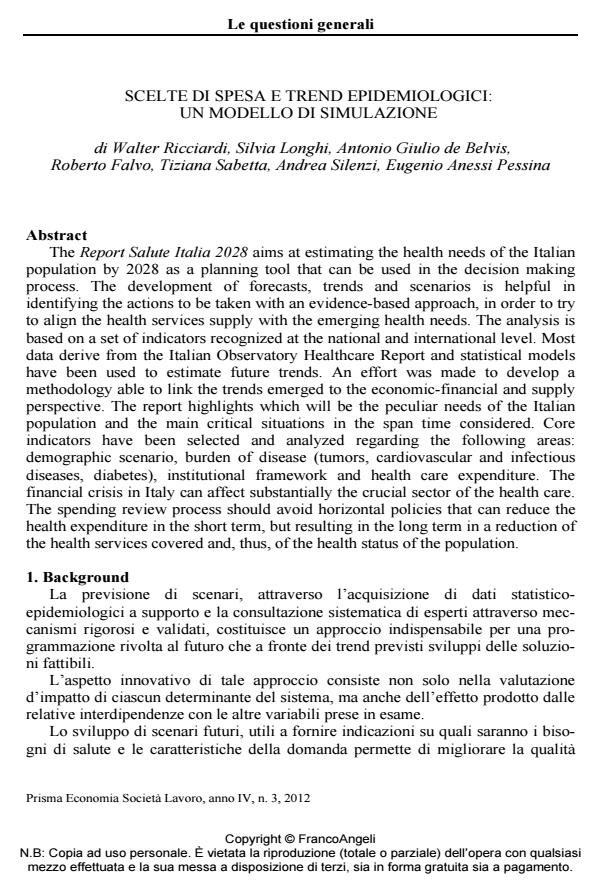Scelte di spesa e trend epidemiologici: un modello di simulazione
Titolo Rivista PRISMA Economia - Società - Lavoro
Autori/Curatori Walter Ricciardi, Silvia Longhi, Antonio Giulio de Belvis, Roberto Falvo, Tiziana Sabetta, Andrea Silenzi, Pessina Eugenio Anessi
Anno di pubblicazione 2014 Fascicolo 2012/3
Lingua Italiano Numero pagine 12 P. 14-25 Dimensione file 723 KB
DOI 10.3280/PRI2012-003003
Il DOI è il codice a barre della proprietà intellettuale: per saperne di più
clicca qui
Qui sotto puoi vedere in anteprima la prima pagina di questo articolo.
Se questo articolo ti interessa, lo puoi acquistare (e scaricare in formato pdf) seguendo le facili indicazioni per acquistare il download credit. Acquista Download Credits per scaricare questo Articolo in formato PDF

FrancoAngeli è membro della Publishers International Linking Association, Inc (PILA)associazione indipendente e non profit per facilitare (attraverso i servizi tecnologici implementati da CrossRef.org) l’accesso degli studiosi ai contenuti digitali nelle pubblicazioni professionali e scientifiche
The Report Salute Italia 2028 aims at estimating the health needs of the Italian population by 2028 as a planning tool that can be used in the decision making process. The development of forecasts, trends and scenarios is helpful in identifying the actions to be taken with an evidence-based approach, in order to try to align the health services supply with the emerging health needs. The analysis is based on a set of indicators recognized at the national and international level. Most data derive from the Italian Observatory Healthcare Report and statistical models have been used to estimate future trends. An effort was made to develop a methodology able to link the trends emerged to the economic-financial and supply perspective. The report highlights which will be the peculiar needs of the Italian population and the main critical situations in the span time considered. Core indicators have been selected and analyzed regarding the following areas: demographic scenario, burden of disease (tumors, cardiovascular and infectious diseases, diabetes), institutional framework and health care expenditure. The financial crisis in Italy can affect substantially the crucial sector of the health care. The spending review process should avoid horizontal policies that can reduce the health expenditure in the short term, but resulting in the long term in a reduction of the health services covered and, thus, of the health status of the population.
Walter Ricciardi, Silvia Longhi, Antonio Giulio de Belvis, Roberto Falvo, Tiziana Sabetta, Andrea Silenzi, Pessina Eugenio Anessi, Scelte di spesa e trend epidemiologici: un modello di simulazione in "PRISMA Economia - Società - Lavoro" 3/2012, pp 14-25, DOI: 10.3280/PRI2012-003003